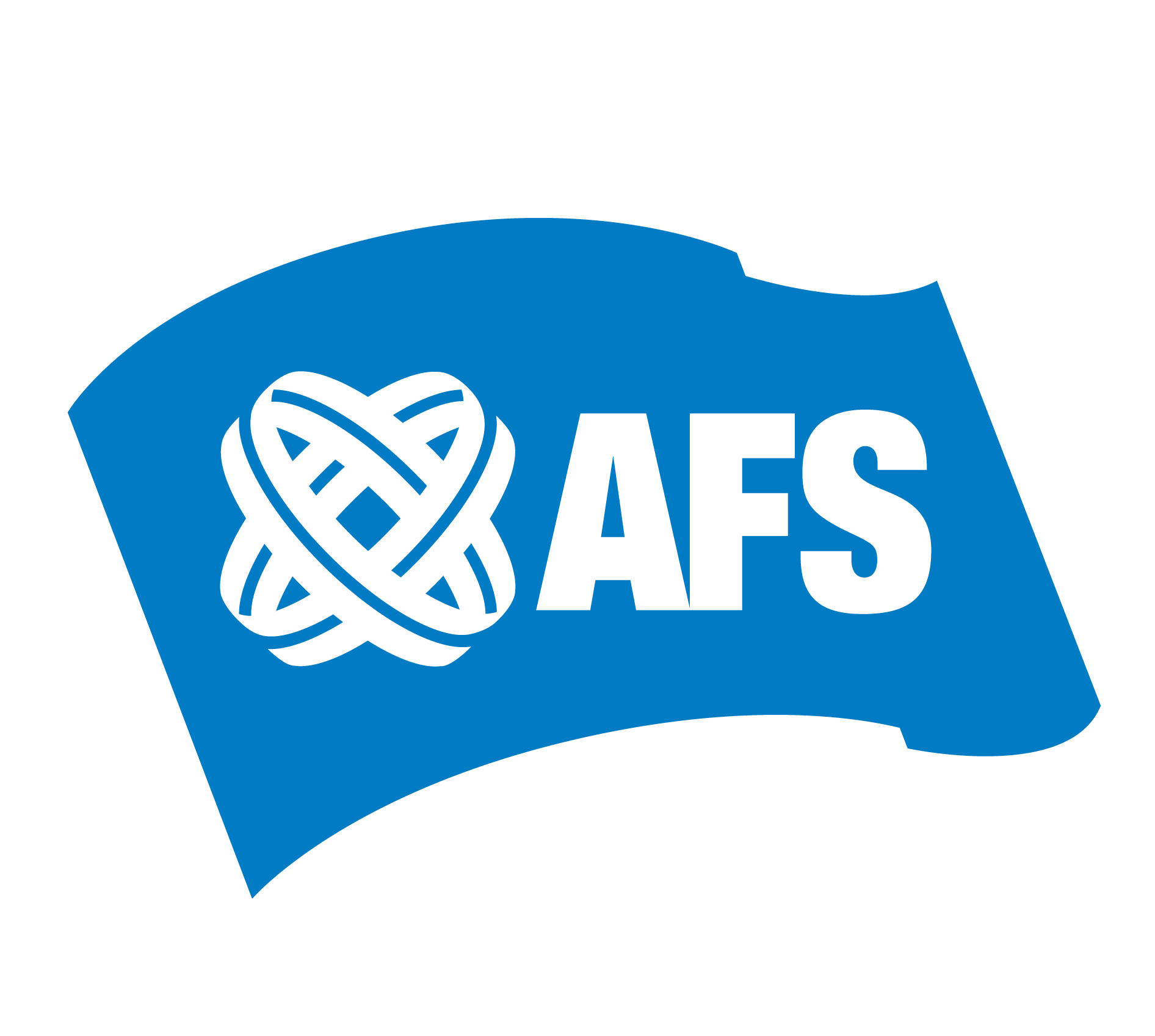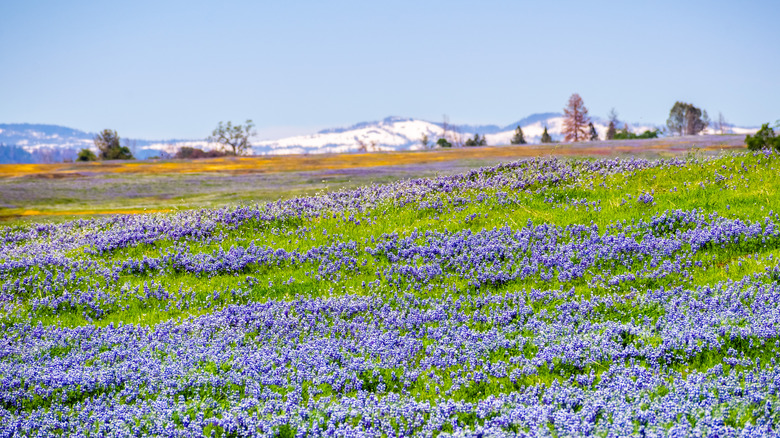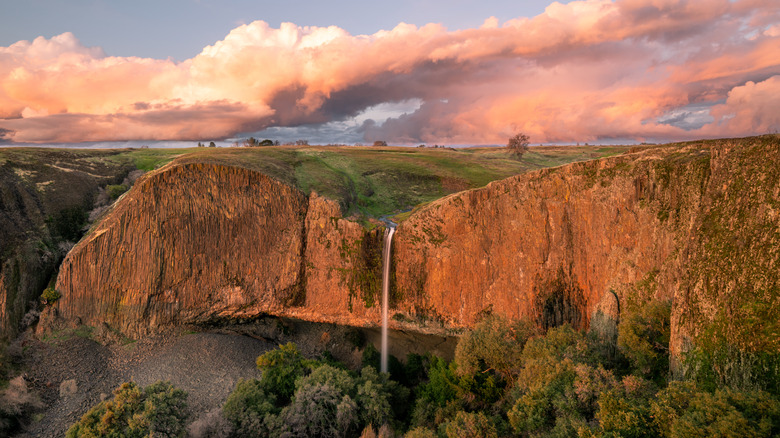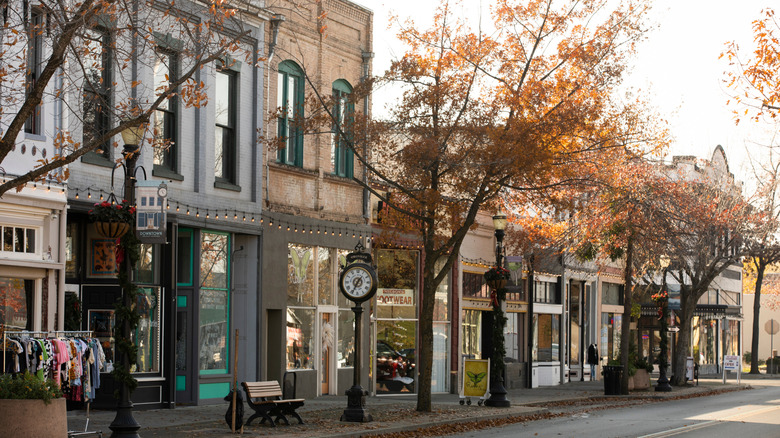We may receive a commission on purchases made from links.
Famed for dramatic super blooms after wet winters and acres upon acres of colorful petals, California is a wildflower haven. And, one of the best places to see California wildflowers this spring is North Table Mountain Ecological Reserve, referred to less formally as Table Mountain. Elevated on a basalt mesa overlooking Butte County’s rolling Sierra Nevada foothills, this quiet reserve is only a 15-minute drive from outdoor-centric Oroville or an hour and a half from Sacramento.
One of the many appeals of Table Mountain is the variety of seasonal wildflowers that bring the volcanic landscape to life. The reserve spreads over about 3,300 acres with jagged rock outcroppings created by ancient lava flows interspersed with seasonal waterfalls, bubbling streams, and serene ponds. The particular mix of flowers sets the stage for beautiful contrast, ranging from vivid indigo sky lupine to California poppies and purple owl’s clover. Keep an eye out for bitterroot, a low-growing purple flower that looks almost like a tiny lotus and blooms straight from the rugged basalt. The best time to visit Table Mountain is usually between late March and mid-April or early May, but it depends on the rainfall in February. For instance, you’ll likely experience a dramatic bloom at the end of March if February has been especially dry.
Things to know before visiting North Table Mountain Ecological Reserve
For incredible views of the reserve’s wildflowers and seasonal water features, hiking is the way to go. An extensive network of dirt trails winds through Table Mountain, providing opportunities to witness the micohabitats thriving in ponds or capture large scale, panoramic photos. With tough, rocky features, these trails aren’t accessible to wheelchairs or strollers and get quite muddy after a rain. Wear sturdy hiking boots with waterproofing like the Merrell Moab 3 Hiking Shoe and bring a hat and sunscreen — the paths are predominantly unshaded. As always, stay on the trail, don’t pick the flowers, and leave no trace.
If you only have time for one trail in the reserve, it should be the moderately challenging Phantom Falls Trail, a 3.8-mile out-and-back route that takes visitors to a 166-foot waterfall. The waterfall is formed by a creek that winds through the wildflower fields before making a dramatic plunge over Coal Canyon. The creek dries up during the summer months and the waterfall is only visible in winter and spring. You’ll likely be sharing the area with cows, so make sure to give the animals at least 300 feet of space at all times.
The designated parking for Phantom Falls Trail and the entire reserve is one small gravel lot off Cherokee Road. To find it, enter “Phantom Falls Trailhead Parking” into your GPS and follow the directions until you spot the pull-off. During weekends in peak season, arrive as early as possible (the reserve opens at sunrise) to secure a spot.




